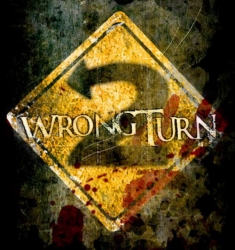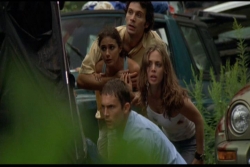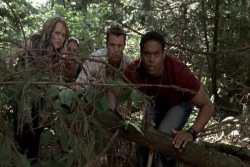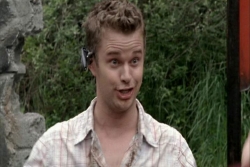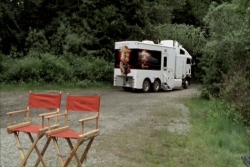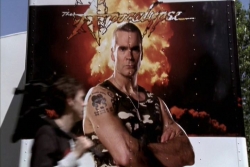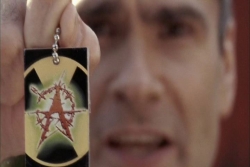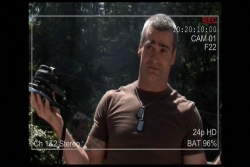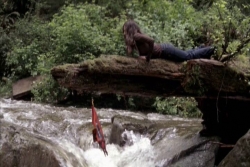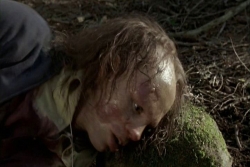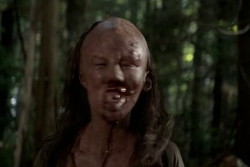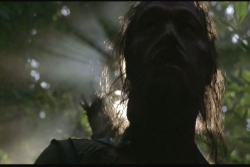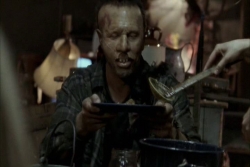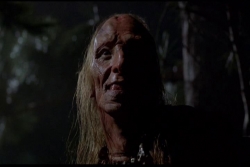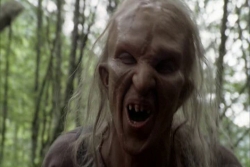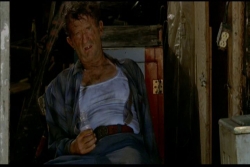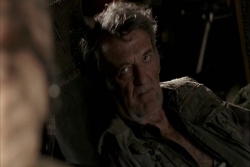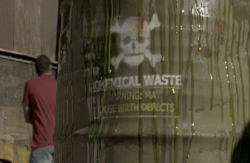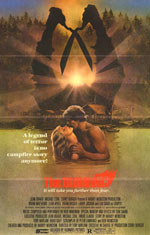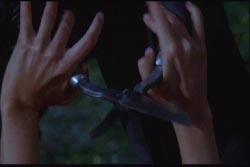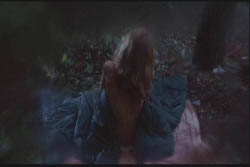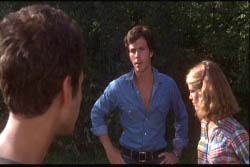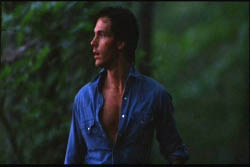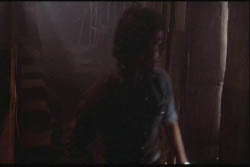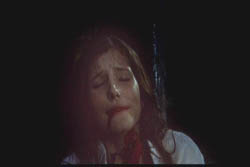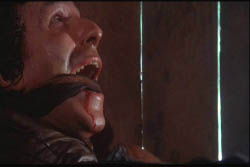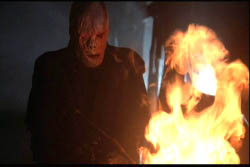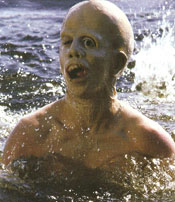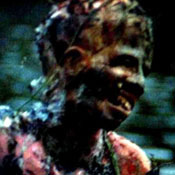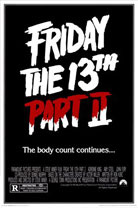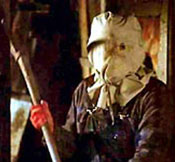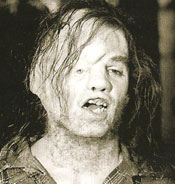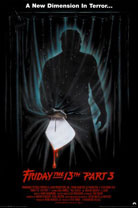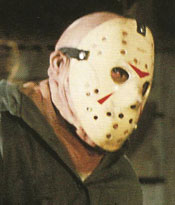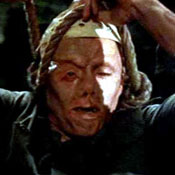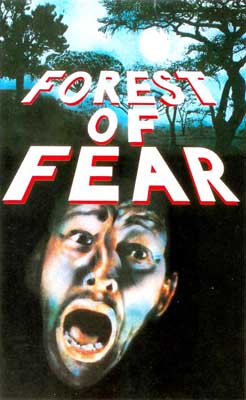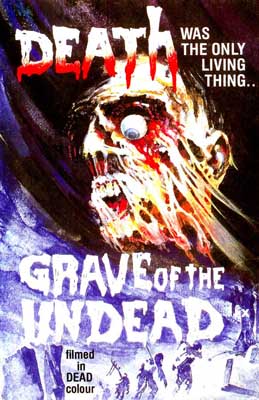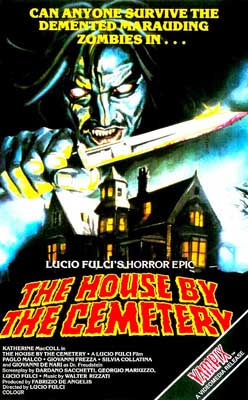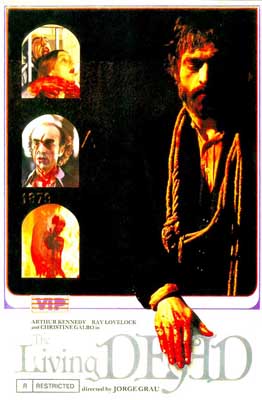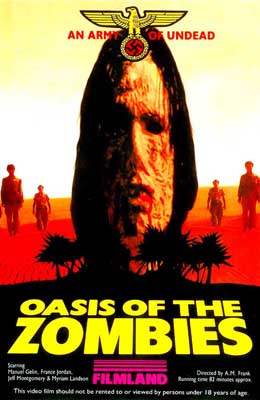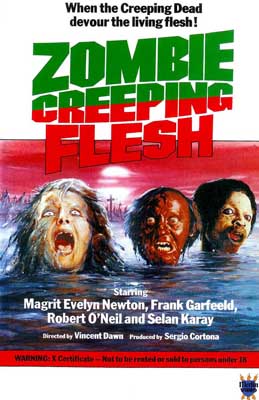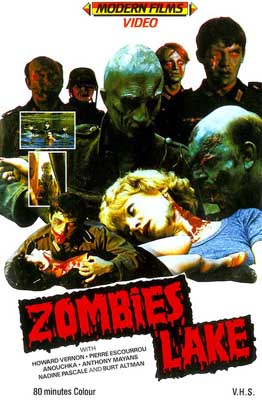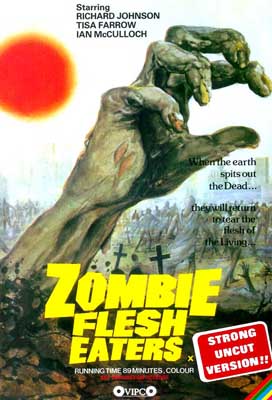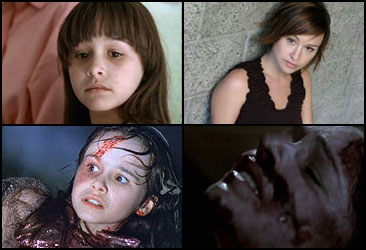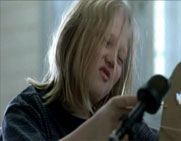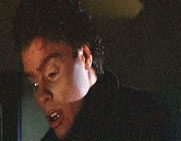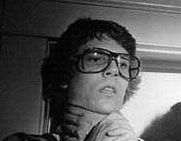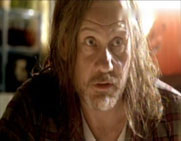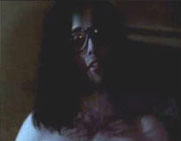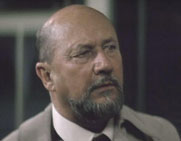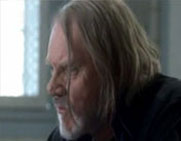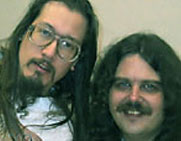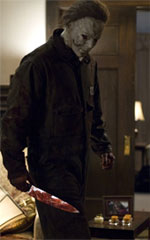ok, wrong turn 2: dead end. we’re going to look at this film in a bit of detail, but if you want to save some time — here’s the short review:
wrong turn is a good movie because it was created by people with interesting ideas who should be commended for their efforts. wrong turn 2 is a bad movie because it was created by people with horrible ideas who should be poked with poking sticks until they’re really annoyed and promise to never ruin another horror franchise again.
do you remember those little star wars read-a-long record books from when you were a kid? you’d put the record on your fisher price player and read along with it in the book… and they’d always start with “turn the page when you hear r2-d2 make this sound … boop beep boop boop.” i loved those things.
anyway… here’s an analogy. wrong turn is to wrong turn 2: dead end as star wars the film is to a star wars read-a-long book. that may require some unpacking, so here it is. the star wars book is essentially the same story as the film… but it’s fundamentally a different experience. you don’t get anywhere near the same atmosphere, acting talent, special effects or (most importantly) emotional impact as you do in the film despite all the characters and plot being present and accounted for. the same holds true for wrong turn 2.
let’s start with our protagonists. below you can see the primary groups of kids we’re to identify with in each film. on the left we have the unfortunate band of travelers from the original wrong turn; on the left the group that serves the same purpose in wrong turn 2.
** click screenshots for larger versions **
despite the goofy look (which i love) on the far right guy’s face, it may be hard to discern the fundamental difference between these two groups from just a screenshot. if so, let me just tell it to you. when watching wrong turn, you will genuinely care about the characters on the left (well, maybe not jeremy sisto’s whiny fiance). i can think of few other slasher films where the characters are so likable and intelligent. instead of screaming “no, don’t go down in the basement!”, you’ll be cheering them on, applauding their resourcefulness and actually hoping they’ll survive at the end. contrast this with the characters on the right. from the moment they’re introduced you won’t just become happy at the thought of their untimely deaths… you’ll be actively annoyed with each second that passes where someone doesn’t flay them alive and then jump up and down on the squishy bits that remain. and at the top of that list is jonesy.
oh, how i hate this character. he makes borat seem like a realistic and sympathetic portrayal of the typical male. he makes stiffler seem like holden caulfield. my god, jonesy… if only these inbred cannibalistic hill-billy’s could have killed and eaten you more than once.
you may have noticed that jonesy has a little thing-a-ma-jig on his ear. that stylish ear-piece brings us to one of the more ridiculous aspects of this film — its premise. not only are these characters horribly unlikable, they’re also contestants on a reality tv show. that thing on jonesy’s ear is supposed to be a camera/microphone used in filming a show called the apocalypse. this show is exactly like survivor except for the fact that it’s lame. the only thing it has going for it is its host, henry rollins. which means…
they get a bad-ass truck with a huge photo of henry rollins on the side! hell yeah! this truck is my favorite thing about this movie. i covet this truck. i can just imagine truckin’ around the dc beltway in this bad boy… wind in my hair… envy of all that see me. i’d have some kickin’ song on the radio (something with a really rad bass line) and as people passed by i’d point my fingers in their direction, make a little ‘chk chk’ clicking sound and give ’em a little wink.
anyway, yeah. the apocalypse. if this show actually existed, it would be horrible. perhaps worse than this movie. maybe even worse than moonlight. first of all, i understand that the common film viewer doesn’t have intimate knowledge of how reality shows are produced — but i think we all know they’re not done like this. to shoot a full episode of survivor, you don’t put cameras on each contestant’s head. can you imagine a show cut together almost exclusively from footage shot from people’s ear lobes?
ignoring the technical logistics, the show still makes little sense. the premise, as best i can figure, is this. the six contestants are let loose in the west virginia wilderness with the goal of surviving for 5 days. each person is given a little radiation badge (see below left), one of which is actually ‘radioactive’ (you cannot tell which without sticking it into a little electronic doohickey). there are also dozens of little devices called ‘twists of fate’ (see below right) spread throughout the woods which have a proximity sensor. if you set one off, you have a time limit to complete the goal it gives you or you are eliminated from the game. if you complete the goal, you are allowed to give your radiation badge to another player therefore ensuring you survive the day.
in the one example the film gives us, a girl sets off one of the sensors and is given 2 minutes to crawl to the end of a log and retrieve a flag (see below).
thrilling.
i can only imagine how exciting that would if i could see her crawling unfold all from the point of view of her hair barrette. and i get chills just thinking about the elimination round at the end of each episode as each contestant steps forward to place their plastic badge in a cheap plastic card reader to see if they’ve been sent packing. that’s such a better idea than the survivor tribal council… or flavor flav’s “you know what time it is” clock distribution ceremony.
of course, very little of the game show actually gets played out as it’s not long before a bunch of cannibalistic humanoid above-ground dwellers descend upon our contestants (and host, henry rollins) and ruin the whole damn shooting schedule. since all but one of the monstrous creepy dudes was killed in the first movie, for the most part we’re treated to a whole new family of good, god-fearing southern folk.
are we really supposed to be scared by these two? are these really the replacements for those terrifying monstrosities from the original film? and it’s not just them. we get a whole clan of lame imitations of the horrors stan winston so convincingly brought to life in the original film.
if you look at the screenshots above closely, i think you can begin to see what i believe is the biggest flaw of the film.
the atmosphere.
wrong turn had a rather mediocre plot accentuated with likable characters. but what it really had going for it was it oozed atmosphere in a way few films do. look at the picture of ‘old timer’ on the left. that guy is dirty. dirty in a way few humans ever achieve. everything in the shot just screams “do not touch” in a way only things in the deep south can. apart from the opening scenes where we see our characters in the safety of their clean, modern automobiles, every moment in wrong turn feels like this.
now contrast that with the guy on the right — the same character, but in the sequel. compared to the one on the left, this guy is the epitome of hygiene. maybe not the guy you want to see sitting at the table when you show up for a blind date, but certainly a guy you wouldn’t mind showing you the best fishing spots in the area. you can see the same thing in the pictures of 3-finger from each film. it seems that in the years since almost being burned alive in the first film, 3-finger has discovered the power of hair conditioner and moisturizing.
i actually found it hard to find close-up shots of the monsters from the original wrong turn dvd, while it was an easy exercise with the sequel. only after going through the dvds looking for images did i realize how carefully constructed the original film is and how long they take to reveal (even partially) what the creatures look like. in contrast, the sequel is thrown together clumsily, showing the monsters early and frequently with no attempt to use lighting or camera angles to convey a sense of menace.
for whatever reason (art design, direction, writing, or acting), the monsters just don’t have the same fear-inducing capacities as in the original film. remember how creepy it was when 3-finger would laugh and hold his knife out at an odd angle, dancing towards eliza dushku like a demented marionette? or how scared you were during the scene where they’re hiding under the bed while the family returns home to finish dismembering lindy booth’s character? or how anxious you were when the spring on the screen door is cutting our hero’s hand to ribbons as he holds it in an effort to stop the noise as everyone else sneaks out? this sequel will elicit none of those emotions, despite using basically the same plot and even raising the level of violence. it reflects poorly on this film that what i gained most from watching it was a new appreciation for its predecessor.
that isn’t to say there’s nothing to enjoy here. unlike the original film which relied heavily on realistic violence, the gore here is taken to ridiculous, comical levels. you won’t find the intensity or suspense of wrong turn here… but you will find yourself gasping and laughing as what you know of biology and physics is completely disregarded in (often successful) attempts to grab your attention. below is an example of what i’m referring to. this short sequence is taken from the first five minutes of the film, so little of the plot will be ruined by watching it. beware though… this is some gruesome (albeit implausible) wackiness.
in defense of the film’s script, it does attempt some clever ideas. the rather stereotypically-wholesome nuclear family of the cannibals (mother, father, children, grandchild) is contrasted with the completely dysfunctional “family” of the contestants who all despise each other. the contestants are forced to pull together and understand each other in order to survive while the cannibals family begins to disintegrate. while somewhat interesting, this idea quickly falls apart as the contestants are quickly whittled down to a number less than family-sized due to the innate structure of this genre (only 1 or 2 characters can survive according to the typical slasher formula).
the script also tries to play against expectation, to occasionally disastrous results. the girl that’s setup as the sympathetic and wholesome “final girl” is killed almost immediately while the hateful bitch character becomes the focus of the story. as happy as i am to have a film refuse to be predictable, there is a reason the likable girl we spend time getting to know usually survives far into the movie — people enjoy watching likable people. they also like cheering for the uber-bitch character to get decapitated as soon as possible. what they don’t like is watching a character they’ve begun to identify with die unceremoniously and then being forced to watch a character they have no affection for trudge through the final hour of the film.
for the most part, the script sticks to less original ideas and either puts forward unwanted explanations or blatantly steals from better films. for example…
wow, i’ve never seen a dinner scene where a girl is bound to a chair at the head of the table and tortured by an insane family. and…
i really needed to know that our cannibal family wasn’t simply the results of a century’s worth of inbreeding and seclusion from the rest of society as i’d assumed… they were actually created in the 1970s when a paper mill dumped a few cannisters of chemical waste into the nearby stream! in case it wasn’t obvious, they helpfully spelled it out (literally) by having it state ‘warning: may cause birth defects’ on the cannister.
additionally, there are really odd moments reflecting back on the reality tv show angle that seem out of place or just don’t work. at one point henry rollins (playing an ex-marine) discovers the dead body of one of the female contestants. his reaction is to kneel down and snap off her ‘radiation’ badge necklace and put it in his pocket. i assume this is a reference to removing dogtags in a time of war… but apart from that, what the hell is he doing? i think it’s safe to say the game is over and her fake game badge won’t really be all that useful.
then there’s the scene where (also, with little reason) one of the cannibals removes a contestant’s camera headset and wears it around his neck. while this does lead to a briefly effective scene where we can see that the killer is coming up behind a technician on his own monitor, for the most part it ruins the suspense in the scenes in which it’s used. how suspenseful would it be if the shark in jaws had a camera mounted on its head so you could always see where it was?
while i would say wrong turn 2 is well worth watching for the over-the-top kills and henry rollins running through the woods like a bad-ass, blowing people up with arrow-mounted dynamite… i have to say my favorite part of the dvd was the seeing the trailer for lake placid 2. a sequel to another film i love that i hope won’t be as disappointing as this one.








